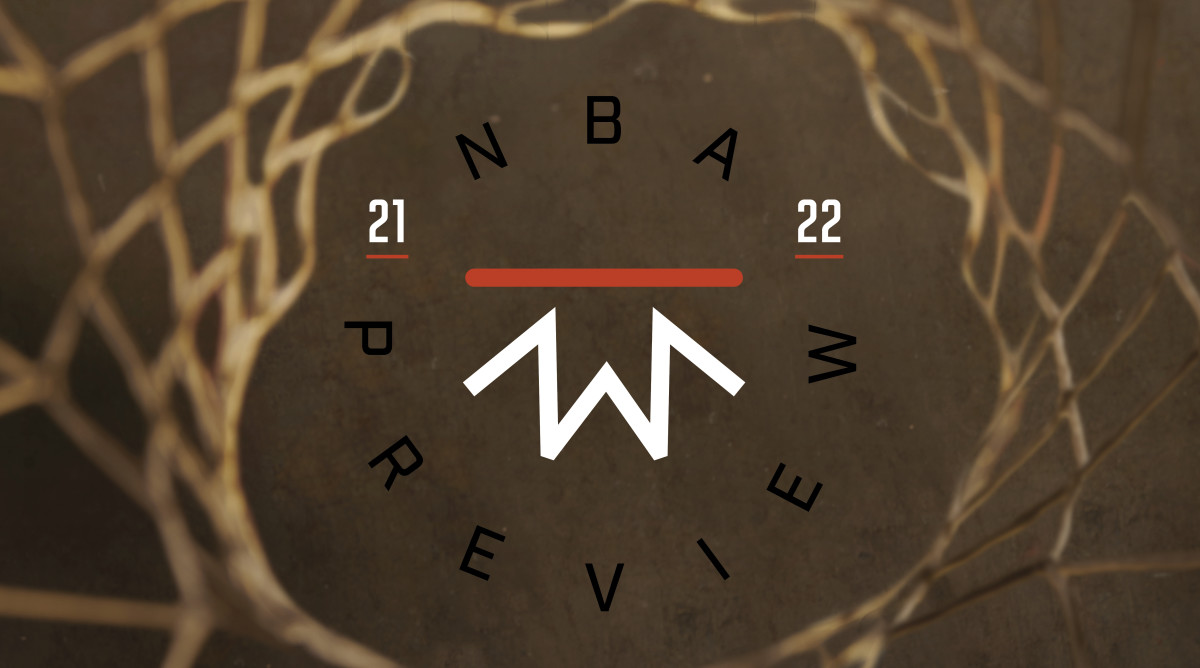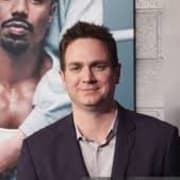The Lakers Are Going All In

The 2021–22 NBA season tips off on Oct. 19, and between now and then the Crossover staff will be analyzing all of the biggest story lines ahead of what promises to be an unforgettable campaign. You can find our NBA preview stories here.
It’s the biggest question. It’s perhaps the only question: Why? It was just last October when the Lakers were celebrating their 17th NBA championship. If Anthony Davis hadn’t tweaked his groin in Game 4 of Los Angeles’s first-round series against the Suns this spring, maybe the Lakers would’ve dispatched the battered Nuggets and Clippers en route to the Finals. That’s not just possible. It’s probable.
So why would L.A., with the bones of a title team, shuttle in 10 new bodies, including one of the NBA’s most polarizing stars? Why would a franchise with seemingly so few roster questions construct an aging one loaded with them? Rob Pelinka pauses to consider the question. “One of the things that gets lost when putting together a roster is that while talent is the most important thing, we are operating in a system, within a collective bargaining agreement, that has taxes and penalties,” says the Lakers’ general manager. “The job of every basketball exec is to thread that needle.”
There’s part of the answer. It explains the loss of Alex Caruso, a key reserve guard who signed a four-year, $37 million deal with the Bulls after the Lakers decided keeping him would push them too far into luxury-tax territory. It explains why Dennis Schröder, who rejected a four-year, $84 million extension last season, signed a one-year contract with the Celtics in the offseason after that longer deal had been taken off the table. It doesn’t explain why Pelinka shipped what was left of L.A.’s trade assets—including 26-year-old forward Kyle Kuzma and last June’s first-round pick—to Washington for Russell Westbrook.
LeBron James has operated as the de facto point guard the last two seasons; in 2019–20 he led the NBA with 10.2 assists per game. Pelinka envisions Westbrook as someone who will take playmaking pressure off LeBron while creating easy opportunities for Davis. James, Pelinka notes, has won titles with strong lead guards. In Miami, it was Dwyane Wade; in Cleveland, it was Kyrie Irving. Westbrook, still a blur in transition at 32, should jump-start the attack (the Lakers were 16th in pace). To help with rebounding, the Lakers brought back Dwight Howard, a key reserve on the 2020 championship team, and signed DeAndre Jordan. “We were a great running team two years ago,” says coach Frank Vogel. “We took a step back last year. I think [Westbrook is] going to get us back to being one of the best.”
Westbrook arrives with baggage. He remains a stat stuffer—22.2 points, 11.5 rebounds and 11.7 assists last season, the fourth time he has averaged a triple double. But the Lakers will be his fourth team in as many years; the Rockets and Wizards each offloaded him after one year. He has the second-highest usage rate in NBA history (32.5%, trailing only Michael Jordan’s 33.2%) and he joins a team with two players (James and Davis) who ranked in the top 25 last season. Pelinka, however, says he has seen an evolution in Westbrook’s game in recent years. “He plays with more empathy now,” says Pelinka. “Sometimes young, athletic guys, they see things with blinders on. I think he has opened up his lens.”
Vogel believes Westbrook’s season in Houston—where he paired with James Harden, another ball-dominant player—will make it easier for him to blend with James and Davis: “He’s willing to do whatever we ask him to do to help this team win a championship. It’s the only thing that matters to him. He’s not concerned with anything else.”

Get the Basketball Preview issue here
The key to the Lakers’ success in the Westbrook era will be spacing. Davis connected on only 26.0% of his threes last season and Westbrook 31.5%. So Pelinka binge-signed deep threats: guards Wayne Ellington (42.2% from three last season for the Pistons) and Malik Monk (40.1% for the Hornets), and swingman Kent Bazemore (40.8% for the Warriors). Guard Kendrick Nunn flashed the ability to create his own shot over two seasons with the Heat, while the Lakers hope playing off James and Westbrook will squeeze a few more catch-and-shoot jumpers out of Carmelo Anthony. Internally, L.A. is bullish on Talen Horton-Tucker, the rising third-year guard who signed a three-year, $32 million contract this offseason. “There’s nothing Talen doesn’t have to keep him from being an elite player,” says Pelinka. Vogel plans to use more small lineups, with Davis at center, to get more shooting on the floor. “We got away from that last year,” says Vogel. “He’ll play more in the middle. You might see some centerless lineups, too. We have the type of team where we can really open the floor up.”
But will the Lakers still be able to defend? They had the NBA’s top-ranked D last season. Davis returns as the centerpiece, but L.A. lost two key perimeter defenders in Caruso and Kentavious Caldwell-Pope, as well as Kuzma. Vogel has challenged Horton-Tucker to play a more significant role defensively, and the Lakers will bank on some combination of Bazemore, Monk and veteran forward Trevor Ariza to force opposing perimeter threats to settle for jump shots and keep them from feasting in the paint. “These guys are going to have to learn each other,” says Vogel. “We’re going to have to build the chemistry necessary to win and get everybody on the same page.”
The Lakers still have James, who, in his 19th season and two months from his 37th birthday, remains one of the league’s top players. Anticipating a more up-tempo offense this season, he reported to camp leaner than in years past. He has a close relationship with Westbrook—James and Davis “enthusiastically” endorsed the trade, says Pelinka—and has posted photos of the two working out together in the offseason. Westbrook’s “competitive spirit,” says Vogel, will give the roster a new energy. “I think the question is, What is the collective mindset of this team going to be? ” says Pelinka. “Are we going to come to the table with some sense of sacrifice? If a star player wants to play by himself, be the only All-Star, put up crazy numbers on a mediocre team, fine. Maybe that’s satisfactory to some. To these guys it’s not.”
Indeed. James, a magnet for motivation, has found some in the criticism of the Lakers’ roster overhaul. “I don’t think this will work,” James sarcastically posted below a picture of him in the gym with Westbrook. He has noted the criticisms of the older roster. He says the Lakers have “recalibrated” after a four-month offseason, which followed a historically short 71-day break after exiting the NBA bubble a year ago. “The great ones, they enjoy being counted out or being doubted,” says Vogel. “And I think he hears the whispers about those things with our team.” Two years ago the Lakers came to camp with a new star—Davis—and a revamped roster. That team won a championship. This group faces comparable challenges. L.A. hopes the results are the same.
More NBA Coverage:
• Luka Dončić Is Learning From the Best
• Karl-Anthony Towns Opens Up About His Season of Grief
• The Lakers' Biggest Concern Is Age, Not Fit
• How I Got Cut From the G League
